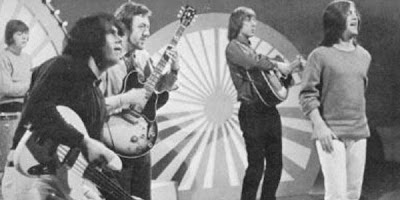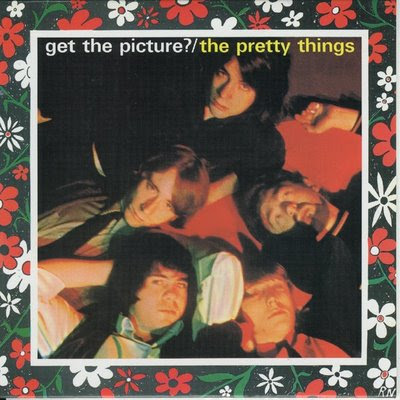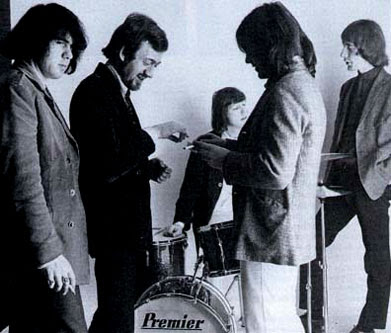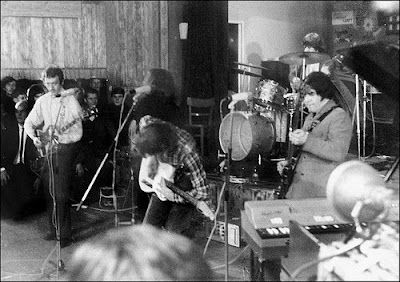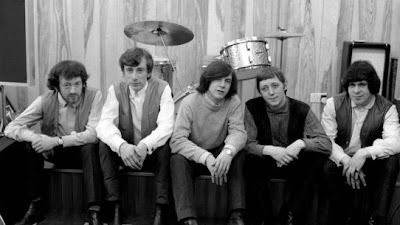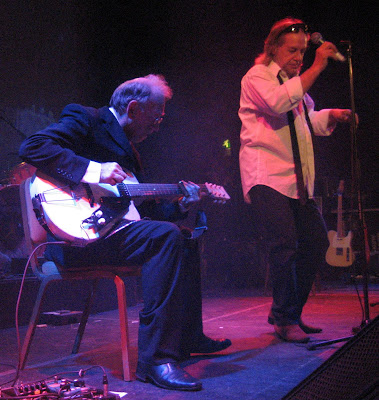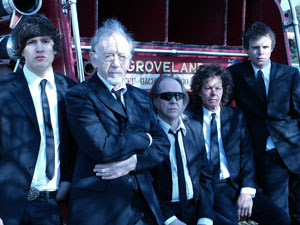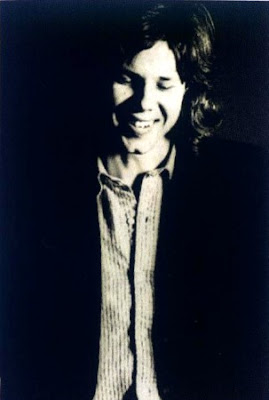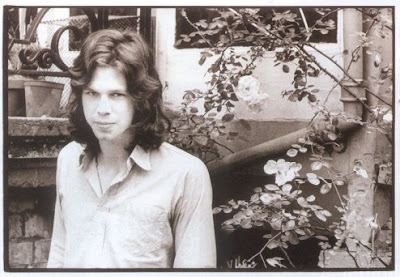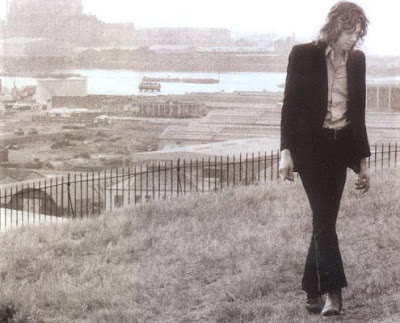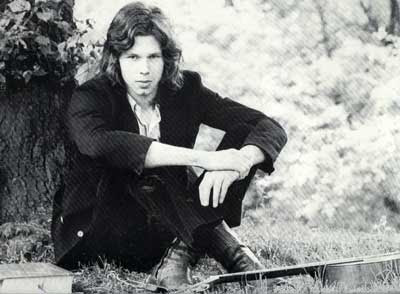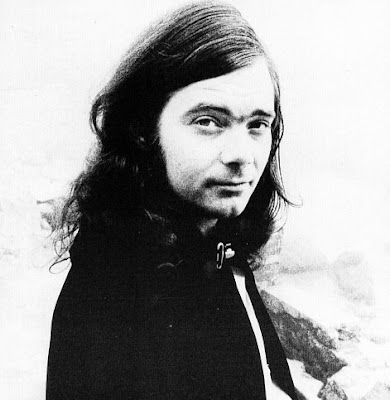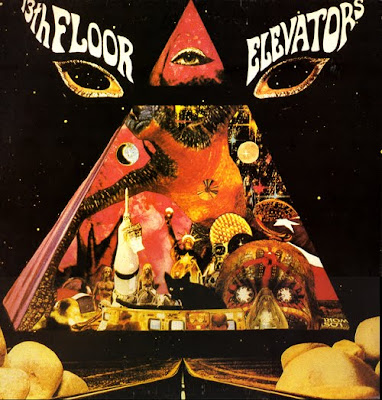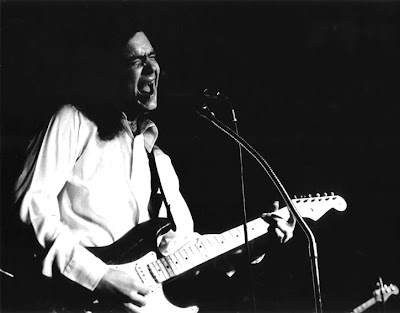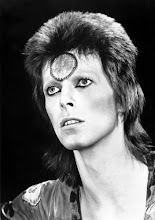
The Yardbirds may not have been as famous as their British Invasion contemporaries the Beatles, the Rolling Stones and the Who, but the pioneering blues-based combo introduced three of the most famous and influential guitarists of the rock era: Eric Clapton, Jeff Beck and Jimmy Page. Their innovations — a revved-up instrumental attack, controlled use of feedback, distortion and fuzz; and live, improvisational jams they called "rave ups" — paved the way for psychedelic rock, progressive rock, heavy metal, Southern boogie and even punk.

The earliest version of the band formed in the London suburbs in the early 1960s as The Metropolis Blues Quartet, but by 1963, the Yardbirds line-up had gelled with core members Keith Relf (vocals, harmonica), Chris Dreja (rhythm guitar), Paul Samwell-Smith (bass) and Jim McCarty (drums), in addition to lead guitarist Anthony "Top" Topham. When sixteen-year-old Topham was pressured by his parents to quit, Eric Clapton, who went by the nickname "Slowhand," stepped in.


The band took over the Rolling Stones' residency at the London club Crawdaddy and became a hot item on the city's R&B scene. In late 1963, the Yardbirds — named for the Southern American slang term for "chicken" — served as the backing band for a Crawdaddy performance by American bluesman Sonny Boy Williamson II. The following year, the group signed with Columbia Records and released its U.K. debut album, Five Live Yardbirds, a live set of hard-rocking electric blues and R&B covers including Howlin' Wolf's "Smokestack Lightning," the Isley Brothers' "Respectable" and Bo Diddley's "I'm a Man."

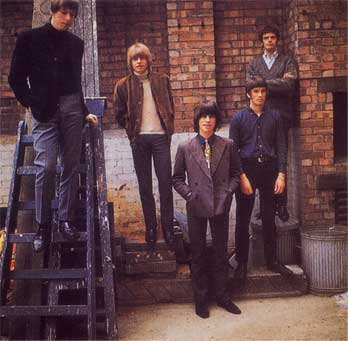
By 1965, the band had developed its own sound, apart from just blues covers, with singles such as "For Your Love," which reached Number Three in the U.K. and Number Six in the United States. Clapton, at the time a blues purist, left the Yardbirds in protest of their move away from the form, and was replaced by experimental rock guitarist Jeff Beck, who took the band to new creative heights. The Yardbirds then released two introductory compilations in the U.S. — For Your Love, including the single of the same name, and Having a Rave Up with the Yardbirds, which includes the singles "Heart Full of Soul" (Number Nine, 1965) and the proto-psychedelic song "Shapes of Things" (Number 11, 1966), as well as a few live tracks from their debut. Rave Up also includes "Stroll On," the group's altered version of the blues standard "Train Kept A-Rollin'," which features both Beck and Page on guitars. The song (and band) appeared in the Michelangelo Antonioni film of 1966, Blow-up.
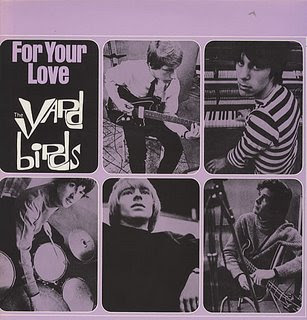
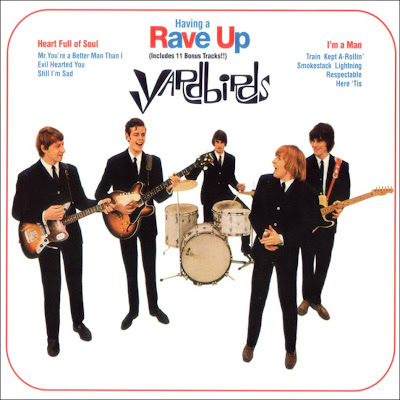

Around the time of the sessions for the Yardbird's next album — a self-titled set of all-original material — Samwell-Smith left his role as bassist and moved behind the scenes as producer. Page officially joined the band as bassist until Dreja mastered the instrument, after which he and Beck paired up as one of the most influential guitar duos of the period. Future Led Zeppelin bassist John Paul Jones also appeared on some songs, including the experimental "Happenings Ten Years Time Ago," which features a twin-lead guitar attack from Beck and Page that provided a blueprint for subsequent heavy metal bands. The album, popularly known as Roger the Engineer and widely considered the Yardbirds' masterpiece, includes influences of Indian and Middle Eastern music as well as avant-garde techniques; it spawned the singles "Happenings" (Number 30, 1966) and "Over Under Sideways Down" (Number 13, 1966). The latter song was also the title of the U.S. version of the album. In 1966, the band also released its earliest live recordings, with Sonny Boy Williamson, as Sonny Boy Williamson & the Yardbirds.


With both Page and Beck, whom the British music magazine Beat Instrumental voted the Number One lead guitarist of 1966, the Yardbirds' live performances became a huge draw and the band earned a slot opening for the Rolling Stones. The Beck-Page version of the Yardbirds, however, was short-lived, as Beck was fired from the band during a U.S. tour. With Page now the sole lead guitarist, the Yardbirds' sound became heavier than the band's earlier incarnations. Page continued some of the avant-garde tendencies of the Beck-era Yardbirds, such as running a violin bow over the strings of his guitar to produce eerie scraping sounds; he would later employ the technique with Led Zeppelin. The experimentation didn't help the band's chart success; none of the three singles from Little Games, the Yardbirds' final studio album in 1967, charted well. During their 1967 and 1968 concerts, the Yardbirds eschewed their singles in favor of darker, beefier music such as the menacing blues-rock song "Dazed and Confused," which Page would take to Zeppelin.
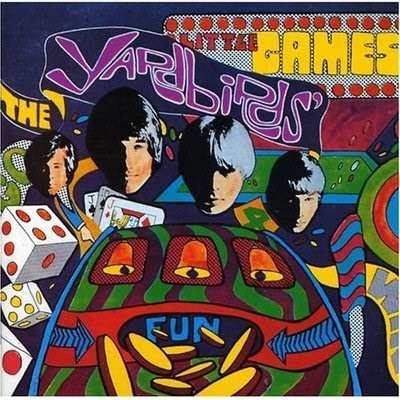
The version of the Yardbirds with the core membership of Relf, McCarty and Dreja performed its last show on July 7, 1968. Page, with outstanding touring obligations for the Yardbirds, assembled a new line-up: his old bassist friend John Paul Jones, singer Robert Plant and drummer John Bonham. The New Yardbirds, of course, would become Led Zeppelin, one of the most successful bands in the history of rock, pioneering the dark and heavy blues sound and fanciful lyrics that constitute the basis of heavy metal. After Zeppelin proved itself a powerhouse with its first three albums, Clive Davis of Epic Records twice released a 1968 Yardbirds performance as Live Yardbirds: Featuring Jimmy Page. The set, which Page's lawyers forced out of circulation both times, includes an embryonic version "Dazed and Confused" and remains a much-sought-after rarity.
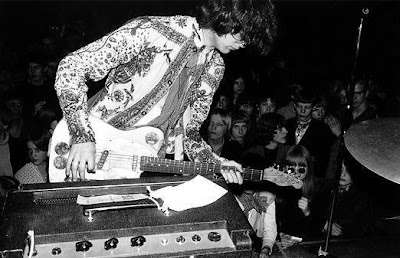
The other Yardbirds took different paths. Dreja became a professional photographer. Relf, McCarty and producer Samwell-Smith formed the progressive rock band Renaissance, although they left after the band's second album, and Renaissance continued producing music throughout into the Eighties. Samwell-Smith wound up producing Cat Stevens' successful career, and the other two moved from one folk-prog band to the next during the early Seventies. Relf died in an electrical accident in 1976. In the 1980s, the core Yardbirds — McCarty, Dreja and Samwell-Smith — reunited as Box of Frogs, with Page or Beck sitting in from time to time.

In 1992, the Yardbirds were inducted into the Rock and Roll Hall of Fame. All surviving musicians, including Clapton, Beck and Page, appeared the ceremony. Around that time, McCarty and Dreja reformed the Yardbirds with singer and bassist John Idan. The band has continued to tour as the Yardbirds with a revolving-door cast of lead guitarists. In 2003, the group released a new Yardbirds album, Birdland, with guest appearances from a string of guitar players including Slash, Steve Vai, Joe Satriani, Brian May and even Beck on the song "My Blind Life." The group released a performance album four years later, Live At B.B. King Blues Club.

Various Yardbirds members through the years
Keith Relf (vocals, harmonica)
Paul Samwell-Smith (lead guitar, bass)
Jim McCarty (drums)
Laurie Gains (rhythm guitar)
Chris Dreja (rhythm guitar)
Tony Topham (lead guitar)
Eric Clapton (lead guitar)
Jeff Beck (lead guitar)
Jimmy Page (lead guitar, bass)

After The Split
After the Yardbirds' split, Paul Samwell-Smith became a reputed producer who worked for artists such as Cat Stevens, Renaissance, Claire Hamill, and Amazing Blondel.
Chris Dreja became a professional photographer after turning away the offer to join Jimmy Page's Led Zeppelin . He actually photographed the band for the back cover of their debut album.
Keith Relf formed the reputed folk rock band Renaissance in 1969, recording several studio albums, including "Renaissance" (69), "Illusion" (71), "Prologue" (72), "Ashes Are Burning" (73), "Turn of the Cards" (74), "Scheherazade and Other Stories" (75). Renaissance played at the Marquee club between 1969 and 1972 and in fact in 1969 they had a Monday residence at the club. In 1975, after having worked with Medicine Head, Relf formed the band Armageddon, featuring Martin Pugh (guitar), Bobby Caldwell (drums, vocals) and Louis Cennamo (bass) and releasing their debut album that same year. Sadly, Keith Relf, who had a poor health and suffered from emphysema, he died a few months after quitting the band in May 14, 1976 when he was electrocuted at his home studio in London while playing guitar during the sessions for Jim McCarty's new band, Illusion.

Jim McCarty was founding member of Renaissance in 1969. He has also worked with the bands Stairway in 1988 and Illusion in 1990. In 1994 he released the solo album "Out of the Dark".
Jeff Beck formed the Jeff Beck Group in 1967, featuring Rod Stewart, Ron Wood, Mick Waller and Nicky Hopkins, producing the albums "Truth" (68) and "Beck-Ola" (69) and performing at the Marquee several times between 1967 and 1969. In 1972, Beck formed the power trio Beck, Bogert, and Appice, featuring Carmine Appice on drums and Tim Bogert on bass. He later developed a reputed solo career as one of the most talented guitarist in rock music and has released more than 10 studio albums, including "Rough and Ready" (1971), "Blow By Blow" (75), "Wired" (76), "There and Back" (80), "Beckology" (91), and "Jeff" (2003). He has also worked with artists such as Jan Hammer, Rod Stewart, Les Paul and Cindy Lauper. He has also won four Grammy Awards throughout his career.
Jimmy Page became one of the most legendary and influential guitarists in the history of rock music with Led Zeppelin , recording eight legendary studio albums with the band. In 1981 he was part of a project called XYZ with ex-Yes members Chris Squire and Alan White, which never saw the light. In 1985 Page took part of Paul Rodgers' band, the Firm. Jimmy Page has also worked with artists such as Graham Nash, the Rolling Stones, Box of Frogs, David Coverdale, and the Black Crowes . With Robert Plant he has recorded the albums "No Quarter" (94) and "Walking Into Clarksdale" (98) and collaborated with Plant as the Honeydrippers.
Eric Clapton is considered today as one of the top guitarists in the world. After quitting the Yardbirds, he debuted with his legendary band Cream at the Marquee club in June 1966. He later formed the supergroup Blind Faith, featuring Ginger Baker, Steve Winwood and Rick Grech. Clapton later started a legendary solo career. In 1970 he formed the band Derek and the Dominoes to record the celebrated album "Layla and Other Love Songs". He has collaborated with uncountable artists, including the Beatles, John Lennon, Howlin' Wolf, Stevie Ray, Mick Jagger, Keith Richards, Jimmy Page, Robert Plant and Stephen Stills.
Various Videos Of The Yardbirds
The Yardbirds - I'm A Man on Hullabaloo
The Yardbirds - For Your Love (1965)
The Yardbirds - Shapes of things Live Video with Jimmy Page
The Yardbirds - Dazed And Confused (1968) Live Video with Jimmy Page
Wiki info can be found here --> http://en.wikipedia.org/wiki/The_Yardbirds
Yardbirds offical website can be found here --> http://www.theyardbirds.com/
Rock On Music Lovers!!
-Stereo
If you liked this article then make sure you subscribe to the feed via RSS It's Free. You can also follow me on Twitter too!
Check out the Retro Rebirth Design Catalog



